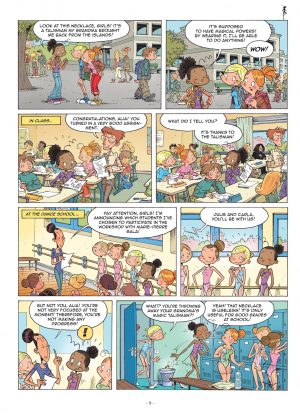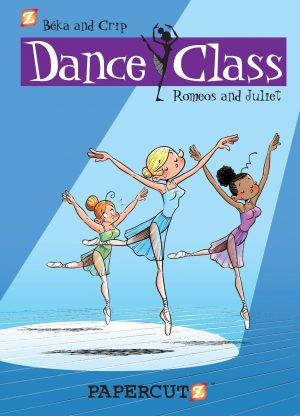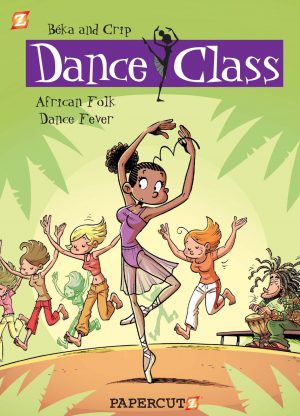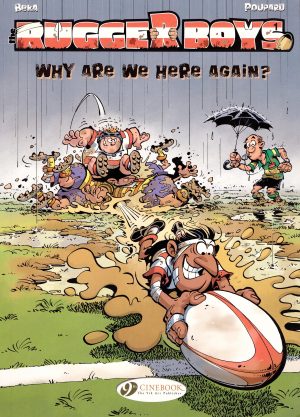Review by Frank Plowright
With the exception of the tenth book, Dance Class volumes are collections of single page gag strips set around the dance classes attended by friends Alia, Julie and Lucie, most leading up to the presentation of a show for which they’re practising during the 44 strips.
The cute cover illustration gets to the heart of the feature, many jokes stemming from stylistic clashes. All kinds of dance are taught at the classes, and other clashes include that of the nice girls with their snooty and manipulative rival Carla, all the girls with Bruno, the only boy in the class, and the clash of joy and proficiency. Several other characters develop in future volumes, but the primary teacher Miss Anne is present from the start, and hip hop teacher K.T. turns up in one of the earliest strips, a hunk fancied by all the girls. Julie’s little sister Capucine and costume maker Nathalia are also introduced, and will be seen more often in later collections.
Artist Crip is unusual for Franco/Belgian comics in that not even the exhaustive Bdgest site lists him by anything other than his alias, but they do reveal that writer Béka is actually a pseudonym for a writing team. Bertrand Escaich and Caroline Roque both have solo writing credits, but their collaborations form the bulk of their careers. As several other beloved long-running European gag strips have shown, even with a strong premise, it can take some time for the creators to find their feet, and here Escaich and Roque are extremely lucky to have Crip on board. His comic credits are few, but he’s a naturally skilled cartoonist, providing the movement dance requires, drawing characters who’ll appeal to an audience of young girls, and giving them all personalities. It disguises that so many of the jokes are really obvious.
The finale is a continued sequence, although still broken down into single pages, as the cast finally present their version of Sleeping Beauty. It’s been mentioned in several earlier strips, the jokes about costumes and casting, and it hints at better for the future. That, though, is with the caveat that Crip makes everything look so good, the intended audience of young girls will be charmed from the start, and not realise the jokes are very simple. There’s an improvement in the smaller sized Romeos and Juliet.
Alternatively both are combined in the bulkier first volume of Dance Class 3 in 1.





